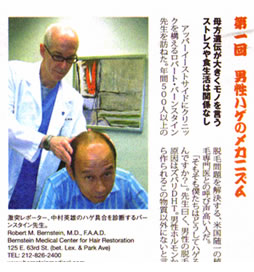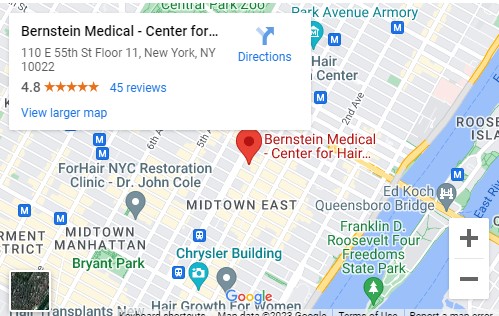Q: I have some early thinning in my crown and the doctor said I am too early for a hair transplant. I don’t want to take Propecia, but using Rogaine twice a day is a big nuisance. Can I use Rogaine once a day? — L.B., Cleveland, Ohio
A: The tissue half-life of minoxidil is 22 hours.
This means that 22 hours after it is applied, about 1/2 of the compound is still bound to the skin and exerting some effect. Because of this, once a day dosing is probably OK.
Please note that this is hypothetical and that there have been no controlled studies to confirm this.


 NY Japion — a weekly newspaper in the Japanese language, published in the New York tri-state area, and distributed for free in the Japanese community — has featured Robert M. Bernstein, MD, in their series on hair loss in men and women.
NY Japion — a weekly newspaper in the Japanese language, published in the New York tri-state area, and distributed for free in the Japanese community — has featured Robert M. Bernstein, MD, in their series on hair loss in men and women. 


